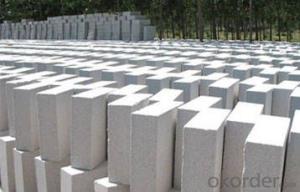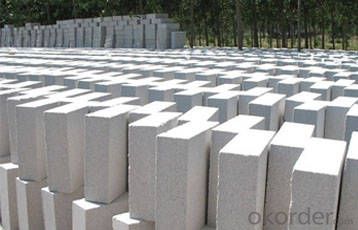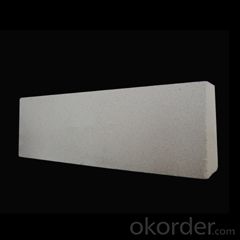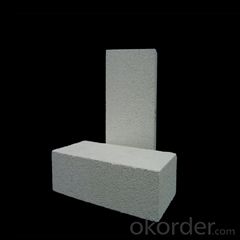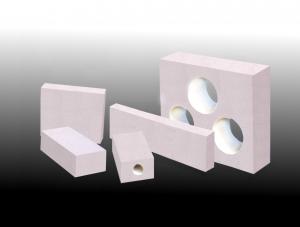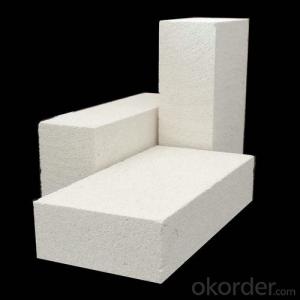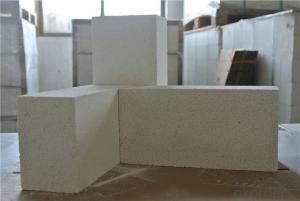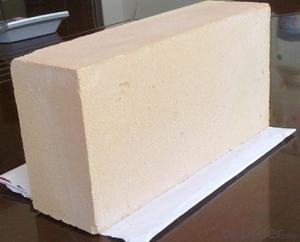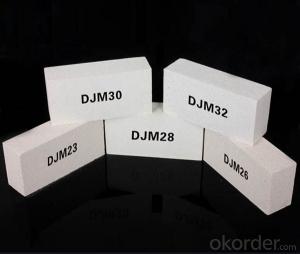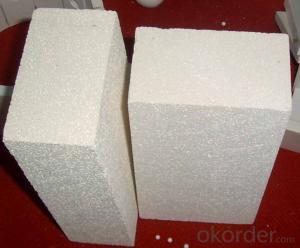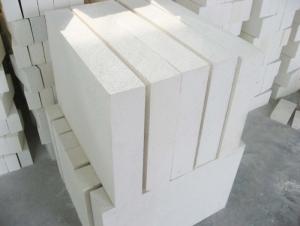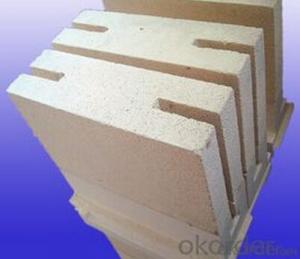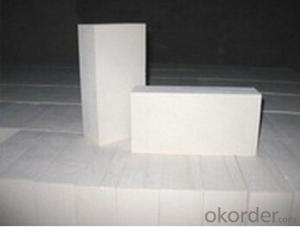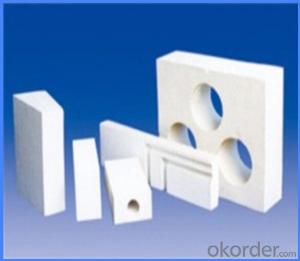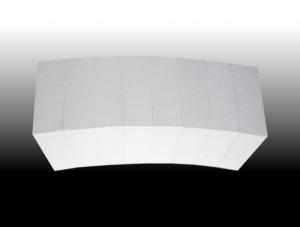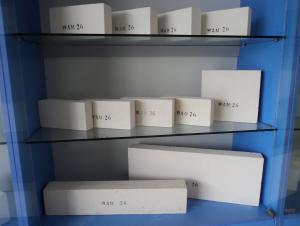Insulating Fire Brick Mullita Ladrilo Refractario Refractarios Aislantes JM 30
- Loading Port:
- Shanghai
- Payment Terms:
- TT OR LC
- Min Order Qty:
- 5000 kg
- Supply Capability:
- 5000000 kg/month
OKorder Service Pledge
OKorder Financial Service
You Might Also Like
Mullita ladrillo refractario refractarios aislantes JM 23
Aislamiento de calor de la serie okorder ladrillo
La serie okorder ladrillo es un eficaz aislamiento térmico, ahorro de energía, baja en carbono, la protección del medio ambiente avanzado, de acuerdo a la norma ASTM la fabricacion de productos.Okorder serie productos son mejores Li Ning y aislamiento en todo tipo de hornos industriales en el sector metalurgico, aluminio, petroquímica, energía eléctrica y materiales de cerámica de vidrio.Pueden ser utilizados como parte de la capa de aislamiento termico o non - Fusion.Los productos han sido ampliamente utilizados en el horno, logra resultados satisfactorios.
Aplicación de la preservación del calor de ladrillo
Industria metalurgica: Blast Furnace, hot alto horno, horno de calefaccion, etc.
Industria petroquímica: etileno horno horno de cracking, producción de hidrógeno, reformador primario, horno de calefaccion, etc.
Industria: horno de rodillos de cerámica, horno, etc.
Industria del vidrio: vidrio horno regenerador, etc.
Industria de carbono: carbono horno, etc.
Sector de la electrólisis de aluminio: aluminio reducción celular, etc.
Otras industrias: horno de tunel, Servicio de horno, etc.
Ventajas de ladrillo del aislamiento de calor
Baja conductividad térmica: mayor porosidad traerá buen aislamiento termico, ahorro de energía.
Alta resistencia al aplastamiento: alta resistencia al aplastamiento, la estabilidad de volumen.
Almacenamiento de calor: pequeños de almacenamiento de calor bajo para absorber más calor, ahorro de efecto es evidente.
Gao Chundu: hierro, metal alcalino de bajo contenido de impurezas.
El tamaño exacto: tamaño de ladrillo precision de procesamiento, forma especial de corte y molienda, acelerar el ladrillo.
Foto de ladrillo aislante
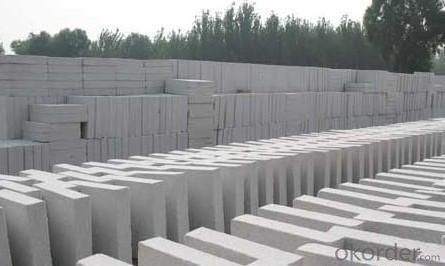
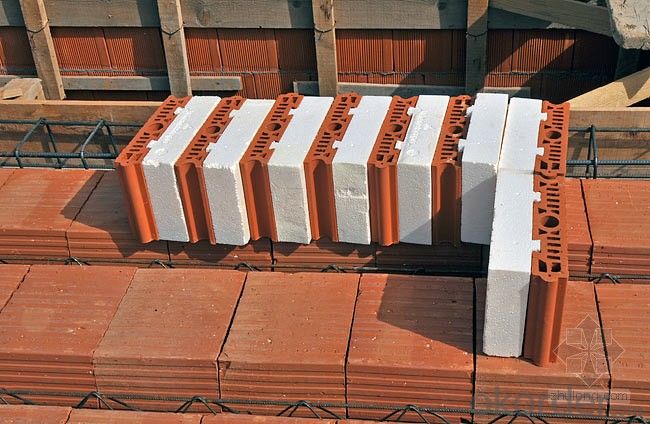

Problema común soluciones
1.¿Que productos tienes?
Disponemos de todo tipo de ladrillos refractarios, refractarios materiales de fundicion, mortero, cemento, productos de fibra cerámica, etc.
O usted puede hojear nuestros productos a elegir lo que usted necesita.
2.¿Cómo controlar la calidad del producto?
Con sistema de estricto control de calidad en la seleccion de materiales y el proceso de producción, tenemos la calidad de materiales refractarios y productos de fibra cerámica para satisfacer las necesidades de los clientes.
Desde la seleccion de materias primas, la calidad de nuestro control para empezar.El certificado de calidad de la materia prima es necesaria, cada lote de los productos serán probados en el uso de la línea.En el proceso de producción, el control de calidad por los trabajadores, y luego cada pieza de la clasificación, y mediante la supervisión de la calidad y la inspección.
3.¿Me puedes dar una breve introducción a la aplicación de su producto?
Mi empresa se dedica principalmente en refractarios en el acero, cemento, vidrio, cerámica, petroquímica, energía eléctrica y otras industrias.
4.¿Qué información necesitas si te necesito?
Con el fin de seleccionar los productos adecuados, que nos proporcionará la información, tales como los Estados Unidos, datos técnicos, cantidad de pedido, la aplicación del producto, etc.
Si usted tiene alguna pregunta, por favor pongase en contacto con nosotros.
- Q: Can insulating fire bricks be used in low-temperature applications as well?
- Yes, insulating fire bricks can be used in low-temperature applications. These bricks are designed to have low thermal conductivity, making them suitable for retaining heat and insulating against temperature fluctuations. They can effectively withstand lower temperatures while still providing insulation and preventing heat loss.
- Q: Can insulating fire bricks be used as a lining for boilers?
- Yes, insulating fire bricks can be used as a lining for boilers. Insulating fire bricks are designed to withstand high temperatures and have excellent thermal insulation properties. They are commonly used in applications where heat retention and energy efficiency are important, such as in industrial boilers. The insulating properties of these bricks help to reduce heat loss and increase the efficiency of the boiler. Additionally, their durability and resistance to thermal shock make them suitable for use in boiler linings, where they can withstand the extreme conditions and fluctuations in temperature.
- Q: Can insulating fire bricks be used for insulation in cement kilns?
- Yes, insulating fire bricks can be used for insulation in cement kilns. Insulating fire bricks are made from lightweight materials with high insulation properties, such as ceramic fibers or expanded clay. These bricks are designed to have low thermal conductivity, meaning they can effectively reduce heat transfer and retain heat within the kiln. Cement kilns operate at very high temperatures, often exceeding 1,400 degrees Celsius (2,500 degrees Fahrenheit). The use of insulating fire bricks in the kiln can help prevent heat loss, improve energy efficiency, and reduce fuel consumption. These bricks create a barrier between the hot gases inside the kiln and the outer environment, reducing the amount of heat that escapes. Moreover, insulating fire bricks have excellent resistance to thermal shocks, allowing them to withstand the extreme temperature fluctuations that occur in cement kilns. This durability ensures long-lasting insulation, reducing the need for frequent maintenance and replacement. However, it is important to note that the specific type and composition of insulating fire bricks required for cement kiln insulation may vary depending on the kiln's design, operating conditions, and other factors. It is advisable to consult with experts or manufacturers who specialize in refractory materials to ensure the correct selection and installation of insulating fire bricks for cement kiln insulation.
- Q: Can insulating fire bricks be used in boilers for steam generation?
- Yes, insulating fire bricks can be used in boilers for steam generation. Insulating fire bricks are made from lightweight materials that have high insulating properties, such as ceramic fibers or expanded clay. These bricks are designed to have low thermal conductivity, which means they are excellent at preventing heat transfer. In boilers, the insulation is crucial to reduce heat loss and improve energy efficiency. Insulating fire bricks can be used to line the walls, roof, and floor of the boiler combustion chamber. By providing a highly insulating barrier, they help to retain heat within the combustion chamber, allowing for more efficient steam generation. Furthermore, insulating fire bricks can withstand high temperatures, making them suitable for use in boilers where steam generation involves elevated temperatures. They are also resistant to thermal shock, which is important in boilers where temperature fluctuations can occur. Overall, insulating fire bricks are a valuable choice for boiler applications as they provide excellent insulation, withstand high temperatures, and contribute to improved energy efficiency in steam generation.
- Q: Are insulating fire bricks suitable for insulation in steam boilers?
- Insulating fire bricks, which are made from lightweight materials such as alumina or silica, are highly suitable for providing insulation in steam boilers. These bricks possess exceptional insulating properties and can endure high temperatures and thermal shocks, making them an ideal choice for use in steam boilers subjected to constant heat exposure. The low thermal conductivity of insulating fire bricks effectively hinders heat transfer, resulting in reduced energy loss and enhanced efficiency of steam boilers. Additionally, their superior insulation capabilities assist in maintaining consistent temperatures within the boiler, preventing fluctuations in heat and minimizing the risk of thermal stress and damage. Moreover, insulating fire bricks exhibit resistance against corrosion and chemical attacks, ensuring their longevity and durability when employed in steam boiler applications. Furthermore, they can be effortlessly installed and cut into various shapes and sizes to perfectly fit the specific requirements of the boiler. In conclusion, insulating fire bricks are an exceptional option for insulation in steam boilers due to their ability to withstand high temperatures, low thermal conductivity, and resistance to corrosion. Their utilization aids in reducing energy loss, improving efficiency, and guaranteeing the long lifespan of the boiler.
- Q: Can insulating fire bricks be used in ladles?
- Yes, insulating fire bricks can be used in ladles.
- Q: Are insulating fire bricks resistant to ammonia gas?
- Yes, insulating fire bricks are generally resistant to ammonia gas. Their high temperature resistance and low thermal conductivity make them suitable for applications involving ammonia gas. However, it is always recommended to refer to the specific manufacturer's specifications and consult with experts to ensure the compatibility of insulating fire bricks with ammonia gas in a particular setting.
- Q: Can insulating fire bricks be used in fireplaces?
- Yes, insulating fire bricks can be used in fireplaces. Insulating fire bricks are specifically designed to withstand high temperatures and provide excellent insulation, making them suitable for use in fireplaces. They are capable of withstanding temperatures up to 3000°F (1650°C), which is well within the operating range of most fireplaces. These bricks are made from special materials that have low thermal conductivity, allowing them to retain heat and prevent it from escaping the fireplace. This insulation property helps to improve the efficiency of the fireplace by keeping the heat inside the firebox and preventing it from dissipating into the surrounding area. Additionally, insulating fire bricks are lightweight, durable, and easy to install, making them a popular choice for fireplace construction or renovation projects.
- Q: Are insulating fire bricks resistant to ultraviolet (UV) radiation?
- No, insulating fire bricks are not resistant to ultraviolet (UV) radiation.
- Q: Can insulating fire bricks be used in waste incineration plants?
- Yes, insulating fire bricks can be used in waste incineration plants. These bricks are designed to withstand high temperatures, making them suitable for lining the combustion chambers and other areas where intense heat is generated in waste incinerators. Additionally, their insulating properties help to reduce heat loss and increase energy efficiency in the incineration process.
Send your message to us
Insulating Fire Brick Mullita Ladrilo Refractario Refractarios Aislantes JM 30
- Loading Port:
- Shanghai
- Payment Terms:
- TT OR LC
- Min Order Qty:
- 5000 kg
- Supply Capability:
- 5000000 kg/month
OKorder Service Pledge
OKorder Financial Service
Similar products
Hot products
Hot Searches
Related keywords
